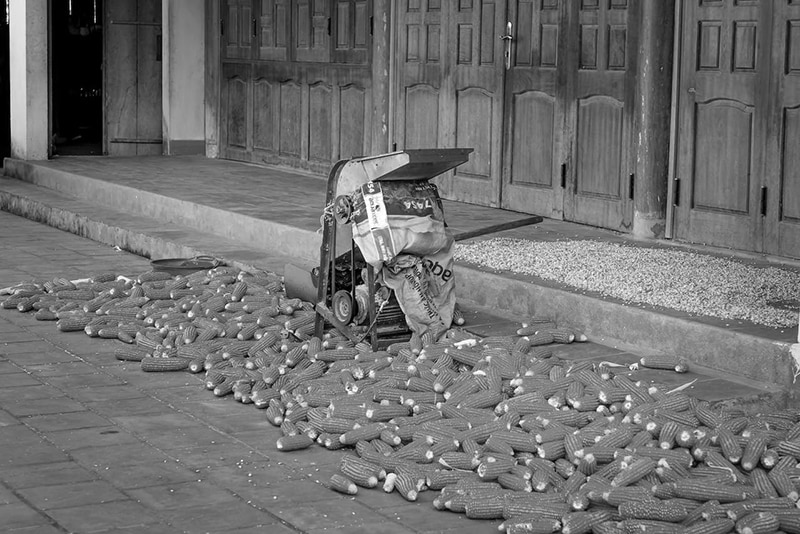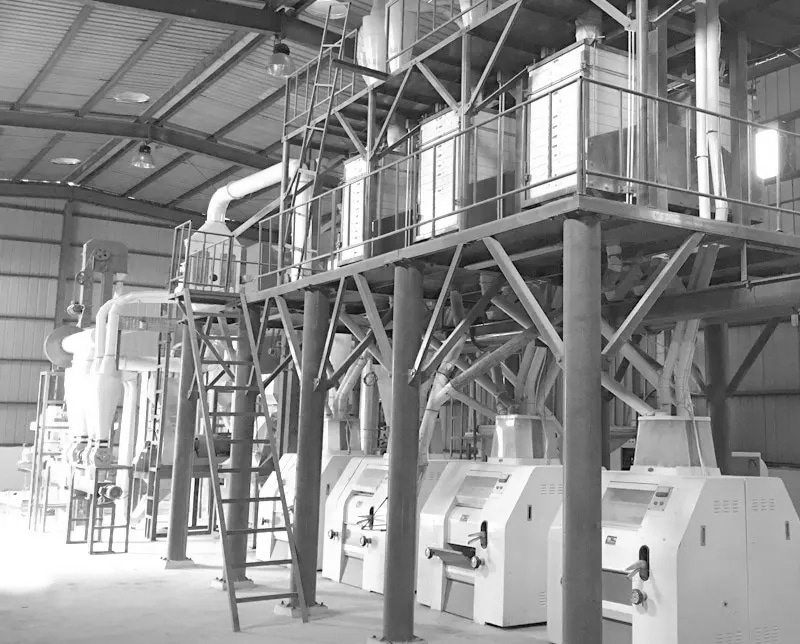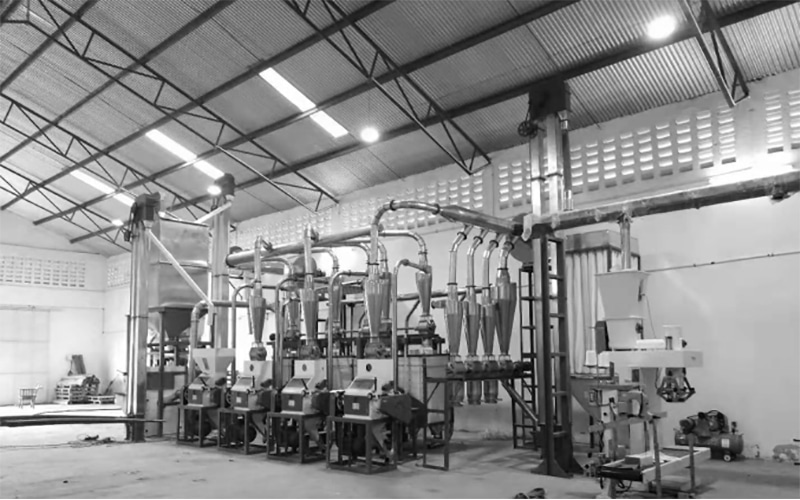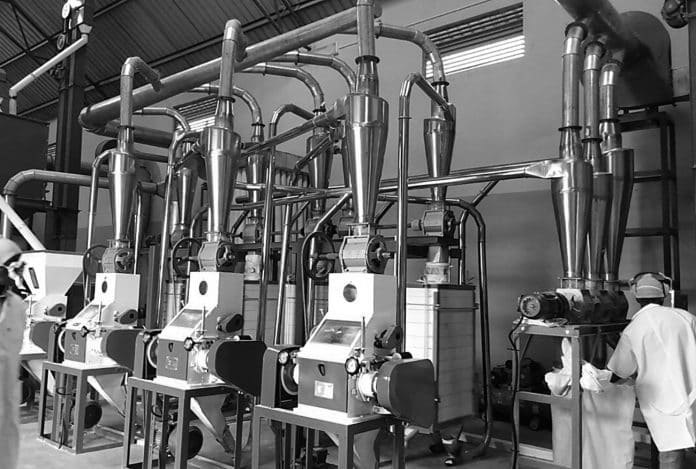From Grains to Gains: The Impact of Maize Milling Machine Price Trends on Tanzania’s Economy
In the vast agricultural landscapes of Tanzania, one crop has been a staple for centuries and continues to play a crucial role in the nation’s economy – maize. From the golden fields to the bustling markets, maize holds the key to both sustenance and prosperity. However, behind the scenes of this agricultural marvel lies a vital component that often goes unnoticed – the maize milling machine. The price trends of these machines have a profound impact on Tanzania’s economy, shaping the livelihoods of millions. This article delves into the intricate relationship between maize milling machine price in Tanzania and the nation’s economic growth. We’ll explore how fluctuations in these prices can either propel Tanzania forward towards prosperity or hinder its development. Join us as we uncover the fascinating story of how grains are transformed into gains, and how the maize milling machine price trends hold the power to shape Tanzania’s future.
Importance of Maize Milling in Tanzania’s Economy

Maize, also known as corn, is the most widely grown crop in Tanzania. It serves as a staple food for the majority of the population and is a significant source of income for farmers. The demand for maize products, such as flour and animal feed, is consistently high, both domestically and internationally. This demand has led to the establishment of a thriving maize milling industry in Tanzania.
Maize milling is the process of grinding maize kernels into flour or other maize-based products. It involves the use of specialized machines called maize milling machines. These machines have revolutionized the way maize is processed, making it more efficient and cost-effective. This cost effectiveness and efficiency is what has caused many to seek out maize milling machine price in Tanzania. The milling process removes the outer husk, germ, and bran from the maize kernel, resulting in different grades of flour with varying levels of nutrients.
Maize milling plays a crucial role in Tanzania’s economy by adding value to the maize crop and creating employment opportunities. It allows farmers to sell their maize at a higher price compared to selling raw maize. The milling industry also generates revenue through the sale of maize flour and other by-products, contributing to the country’s GDP. Additionally, the availability of affordable maize flour ensures food security and helps stabilize prices in the market.
Factors Influencing Maize Milling Machine Prices
Maize milling machine price in Tanzania are influenced by various factors, both internal and external. Understanding these factors is essential for analyzing the impact of price trends on Tanzania’s economy.
- Raw material costs: The cost of raw materials, such as steel, iron, and other components used in the manufacturing of maize milling machines, directly affects their prices. Fluctuations in the prices of these raw materials can have a significant impact on the final cost of the machines.
- Technological advancements: The introduction of new technologies and innovations in the manufacturing of maize milling machines can impact their prices. Technological advancements that improve efficiency, reduce energy consumption, or enhance the quality of the end product may result in higher prices initially but can lead to long-term cost savings.
- Market demand: The demand for maize milling machines plays a crucial role in determining their prices. High demand often leads to increased competition among manufacturers, resulting in lower prices. Conversely, low demand can lead to higher prices due to reduced production volumes and economies of scale.
- Currency fluctuations: Tanzania’s economy is influenced by fluctuations in currency exchange rates. Changes in the value of the Tanzanian shilling against major international currencies can impact the prices of imported maize milling machines, as well as the cost of raw materials used in local manufacturing.
Historical Trends in Maize Milling Machine Prices
Over the years, maize milling machine price in Tanzania have experienced both gradual increases and occasional fluctuations. These trends have been influenced by a variety of factors, including changes in raw material costs, technological advancements, and market dynamics.
In the early years of maize milling in Tanzania, the prices of milling machines were relatively high due to limited competition and the high cost of imported machinery. However, as the demand for maize products increased and the industry expanded, more local manufacturers emerged, leading to increased competition and lower prices. This trend continued as technological advancements allowed for more efficient and cost-effective manufacturing processes.
In recent years, maize milling machine price in Tanzania have been relatively stable, with minor fluctuations driven by changes in raw material costs and currency exchange rates. The introduction of new models with advanced features and improved performance has also contributed to price variations. Overall, the trend has been towards more affordable machines, making maize milling accessible to a wider range of farmers and entrepreneurs.
Impact of Maize Milling Machine Price Fluctuations on Farmers

Fluctuations in maize milling machine prices can have a significant impact on farmers, especially small-scale farmers who rely on maize production for their livelihoods. The affordability of milling machines directly affects farmers’ ability to process their maize and sell value-added products.
When maize milling machine price in Tanzania are high, farmers may struggle to afford them, forcing them to rely on manual processing methods or sell their maize as raw produce at lower prices. This not only limits their income potential but also reduces the value they can add to their crop. On the other hand, lower prices make milling machines more accessible, enabling farmers to process their maize and sell higher-value products, such as flour and animal feed.
Access to affordable milling machines can also empower farmers to diversify their income streams by producing value-added products. For example, farmers can produce maize flour for local consumption or for sale in the market, creating additional revenue streams. This not only increases their income but also contributes to food security by ensuring a steady supply of affordable maize flour.
Implications for Local Businesses and Industries
The maize milling industry in Tanzania is not limited to farmers alone. Maize milling machine price in Tanzania have a ripple effect on various other sectors of the economy, including local businesses and industries.
The availability of affordable maize milling machines allows local entrepreneurs to establish small-scale milling businesses. These businesses can provide employment opportunities in rural areas, where most maize is grown. They also contribute to the local economy by purchasing maize from farmers and selling value-added products in the market.
Furthermore, maize milling machine price in Tanzania tend to impact other sectors as well. As stated earlier, its ripple effects are far reaching. A few of the other industries it supports are the transportation and the packaging industry. As the demand for maize products increases, the need for transportation services to move the raw materials and finished products also rises. Similarly, the packaging industry benefits from the increased demand for packaging materials for maize flour and other maize-based products.
Overall, fluctuations in maize milling machine prices can have a significant impact on local businesses and industries, influencing their profitability, growth, and contribution to the economy.
Government Policies and Interventions in the Maize Milling Sector

The Tanzanian government plays a crucial role in shaping the maize milling sector through various policies and interventions. These aim to support farmers, promote entrepreneurship, and ensure that maize milling machine price in Tanzania are affordable.
One such intervention is the provision of subsidies or financial assistance to farmers and entrepreneurs interested in maize milling. These subsidies can help offset the cost of purchasing milling machines, making them more affordable and accessible. The government also offers training and capacity-building programs to enhance the skills and knowledge of farmers and millers in maize processing techniques.
Besides subsidizing maize milling machine price in Tanzania, the government also implements regulations and quality control measures to ensure the safety and quality of maize products. This includes setting standards for milling machines and monitoring their compliance. Such measures help build trust in the industry and promote consumer confidence in locally produced maize flour and other products.
Government policies also encourage local manufacturing of maize milling machines by providing incentives to manufacturers and promoting research and development in the sector. This not only supports local businesses but also reduces dependence on imported machinery, contributing to the country’s economic growth and self-sufficiency.
Opportunities for Investment in Maize Milling Machines
The maize milling sector in Tanzania presents lucrative opportunities for investment, both for local entrepreneurs and foreign investors. The demand for maize products continues to grow, driven by population growth, urbanization, and changing consumer preferences. This demand has also caused more people to inquire about maize milling machine price in Tanzania.
Investing in maize milling machines can provide a steady source of income, as well as contribute to the development of the local economy. Entrepreneurs can establish small-scale milling businesses, serving local communities and creating employment opportunities. Foreign investors can explore partnerships with local manufacturers or set up their own milling operations to tap into the growing market demand.
However, it is essential to conduct thorough market research and feasibility studies before making any investment decisions. Factors such as maize milling machine price in Tanzania, market demand, competition, infrastructure, and regulatory requirements should be carefully considered to ensure the success and sustainability of the investment.
Future Outlook and Predictions for Maize Milling Machine Prices
The future of maize milling machine prices in Tanzania is influenced by a variety of factors, including global economic trends, technological advancements, and government policies. While it is challenging to predict the exact trajectory of prices, certain trends can be anticipated.
Continued technological advancements are expected to drive the development of more efficient and cost-effective maize milling machines. This can lead to lower prices, making milling more accessible to farmers and entrepreneurs. Additionally, government initiatives to support the sector, such as subsidies and capacity-building programs, can further contribute to maize milling machine price in Tanzania being more stable and affordable.
However, fluctuations in raw material costs and currency exchange rates may introduce some volatility in maize milling machine prices. To mitigate these challenges, local manufacturing capabilities can be strengthened, reducing dependence on imported machinery and minimizing the impact of currency fluctuations.
Overall, the future outlook for maize milling machine price in Tanzania is positive, with the potential for increased affordability and accessibility. This bodes well for the continued growth and development of the maize milling sector, contributing to Tanzania’s overall economic prosperity.
Balancing Affordability and Sustainability in Maize Milling
The maize milling machine price trends in Tanzania have a profound impact on the nation’s economy, shaping the livelihoods of farmers, entrepreneurs, and various industries. The availability of affordable milling machines enables farmers to add value to their maize crop, create additional income streams, and contribute to food security.
Government policies and interventions play a crucial role in supporting the maize milling sector, promoting entrepreneurship, and ensuring the safety and quality of maize products. These efforts, combined with technological advancements and local manufacturing capabilities, contribute to maize milling machine price in Tanzania being stable and affordable.
The future of maize milling machine prices in Tanzania looks promising, with the potential for increased accessibility and growth in the sector. Balancing affordability and sustainability will be key in ensuring the continued development of the maize milling industry and its positive impact on Tanzania’s economy.
As Tanzania continues to navigate its agricultural landscape, the trend of maize milling machine price in Tanzania will remain a critical factor. By understanding and addressing the factors influencing these prices, the nation can harness the full potential of its maize industry and pave the way for sustainable economic growth and prosperity.
For more related articles on Manufacturing and Business in Tanzania (Trade) click here!


































